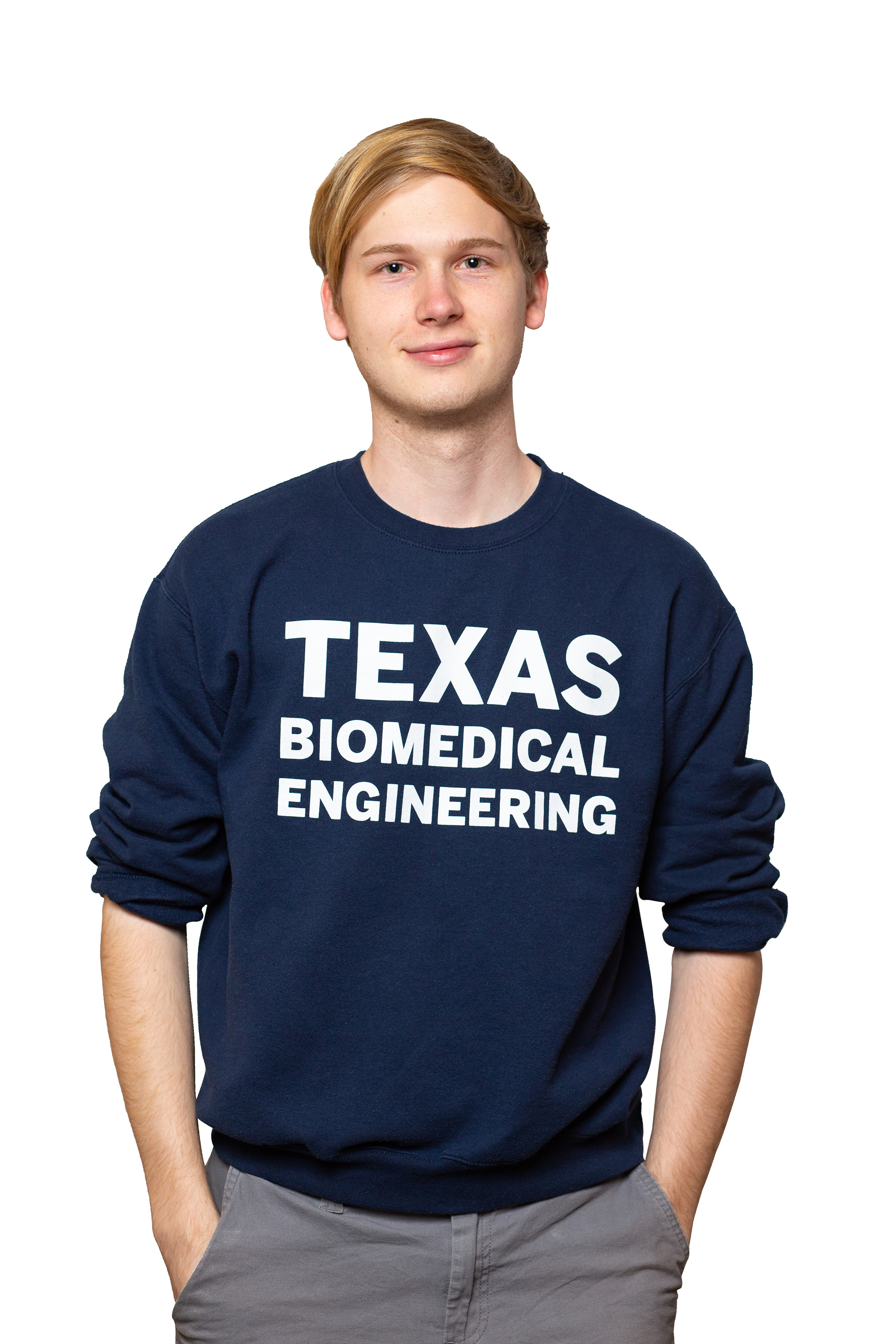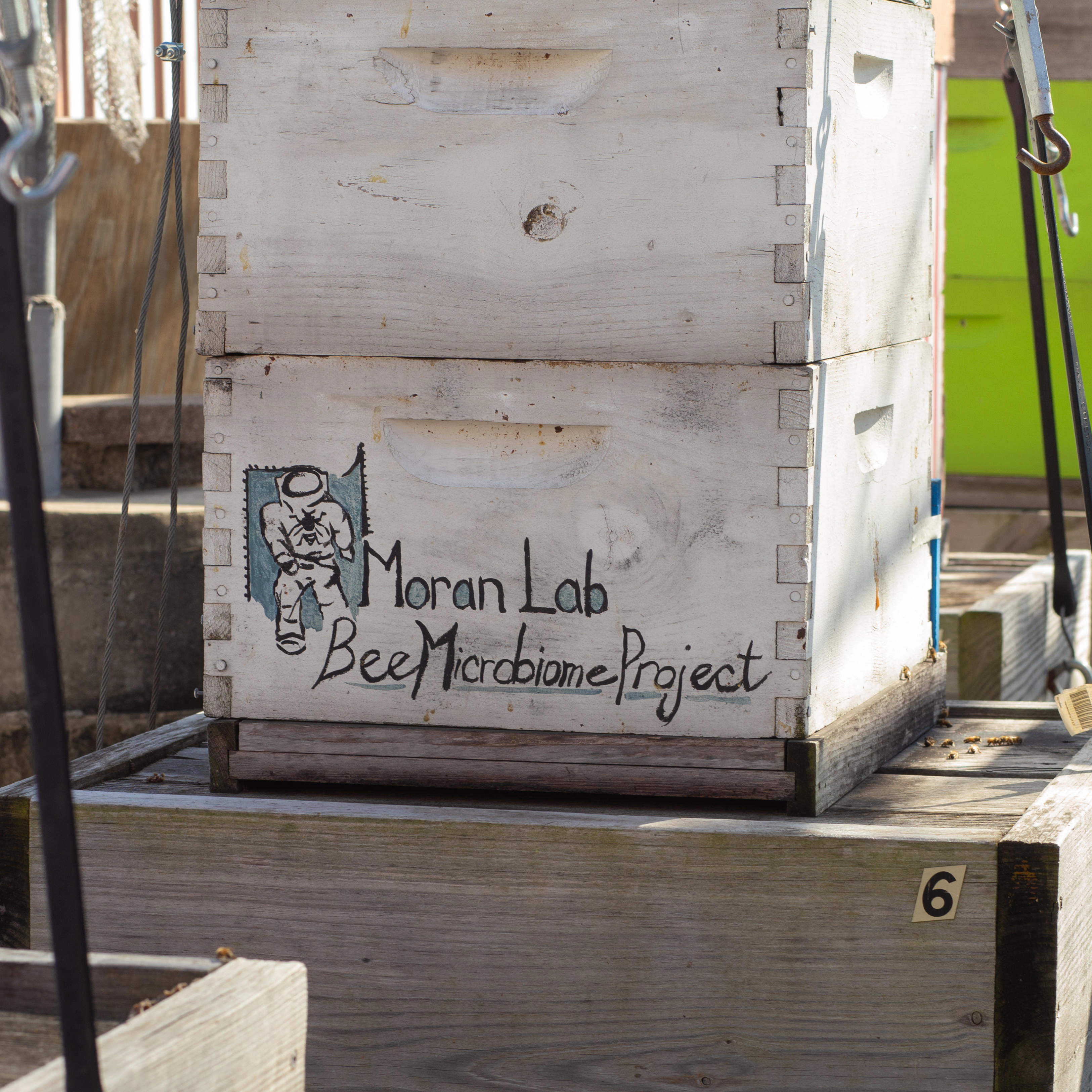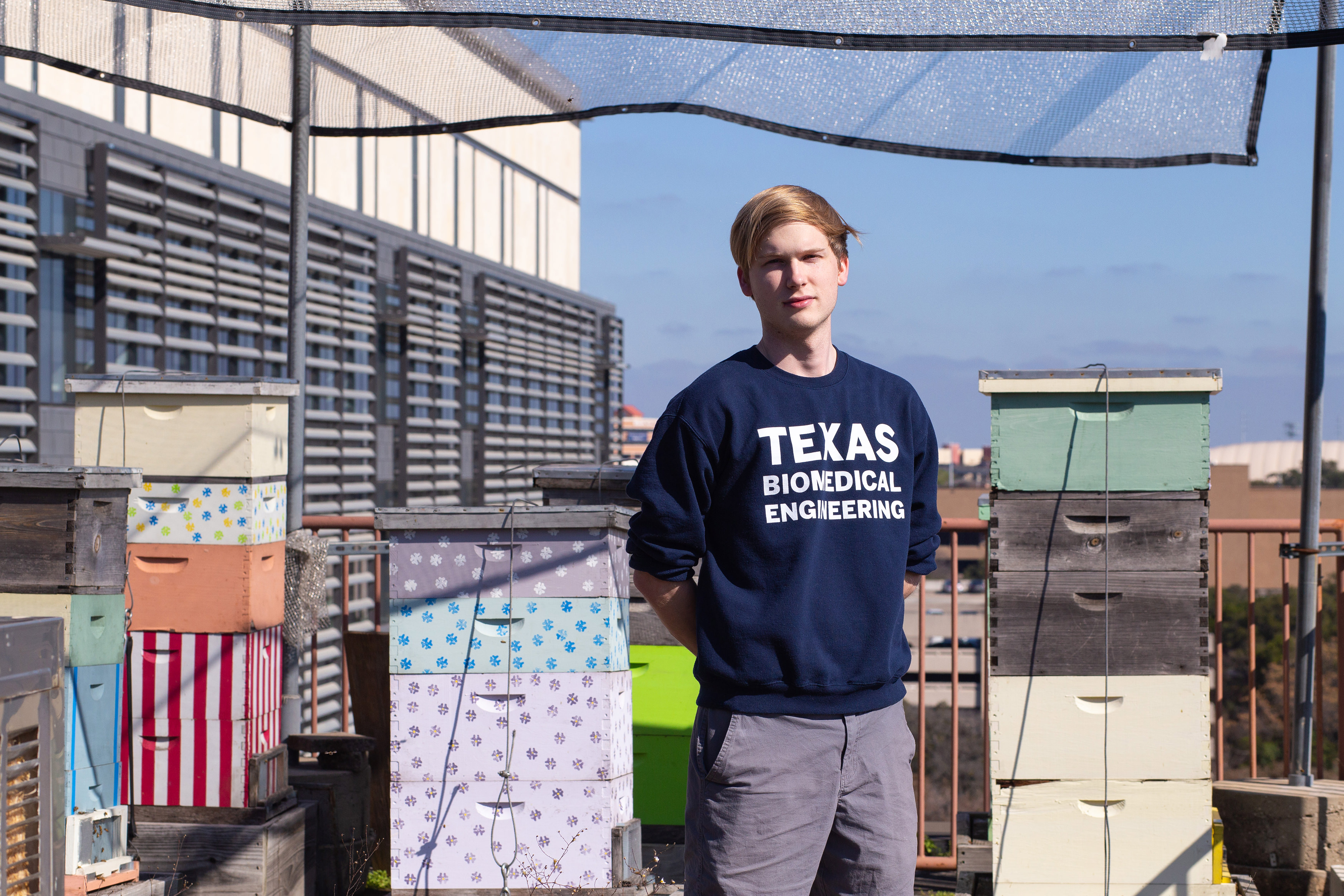
Musicians dream of Carnegie Hall and athletes aspire to compete in the Olympics. In academia, no single journal serves as the definitive and ultimate goal for publishing research. But, as biomedical engineering junior and undergraduate researcher Luke Heckmann knows, if anything comes close, it’s the journal Science.
Heckmann, along with nine other researchers from The University of Texas at Austin, is a co-author on a study of genetically engineered bacteria that protect honey bees, which was recently published in Science. Their team engineered a honey bee bacterium to produce a signal that helps the bee’s immune system fight off viruses and mites. By getting involved with this project—led by professor of integrative biology Nancy Moran and cell and molecular biology graduate student Sean Leonard—Heckmann went from having no research experience as a first-year student in the School of Undergraduate Studies to being published at the top of the field.
Science is considered a “prestigious multidisciplinary journal.” Journals like Science publish the latest major findings from a variety of disciplines. Their wide circulation and diverse audiences ensure that the articles make a major impact, or even change the current paradigm, in their respective fields. The difficulty of getting published in these “top-of-the-heap” journals, which have acceptance rates of around 7%, gives researchers cachet in subsequent publishing and applying for jobs. But none of this was on Heckmann’s mind when he first set out to do research.
“I knew I wanted to do something research-related as an extracurricular,” Heckmann said of his first semester on campus. “I saw something bee-related coming out of the Moran lab, so I just emailed Dr. Moran.”
Contacting professors out of the blue about their research, often with the help of resources like the Eureka database, is a common way for students to connect with ongoing research. While it’s always a question of finding the right fit between the faculty member’s needs and the student’s skills and interests, in Heckmann’s case, things fell into place quickly.
“I interviewed with Dr. Moran, and then Sean, because he needed an undergraduate researcher,” Heckmann said. “The conversations were pretty casual. I didn’t have any experience at that time.”

Heckmann was quickly shown how to carry out work on the project — editing the circular rings of bacterial DNA known as plasmids, collecting data from the bees, and even doing a little beekeeping. While not all student research involvement results in a publication, in his case, his mentors brought up this possibility early on.
“It was kind of a seamless matter of, ‘You’ve been working on this, so we’re going to have you as an author,’” he said. “Several times this was repeated before we even started writing because my mentor wanted to assure me that my work wasn’t going to go unrewarded.”
“My mentor told us that he thought it could be a high-profile paper,” Heckmann said of the submission process. “We got initial reviews back and we needed to have major revisions, so that was disheartening a little bit. Then when we resubmitted, we got accepted.”
Heckmann has been able to expand on this project with funding from an Undergraduate Research Fellowship. “The fellowship was extremely helpful because supplies are very expensive,” he said. “It could develop into a sequel to this paper. It’s doing the same thing, but in different strains of bacteria and seeing exactly why this one bacterium that we chose for this project was able to facilitate this process.”
For other students curious about research, Heckmann recommends finding and initiating a conversation with a faculty mentor. “If anything you see catches your interest, reach out to the person behind it immediately. And don’t be afraid, because the majority of the time these people are looking for undergraduate researchers to help them. Most of the time they’re extremely generous people.”


